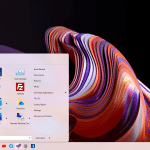Data warehouses not delivering return on investment

A report from Dremio, based on a study by Wakefield Research, shows only 22 percent of data leaders have fully realized their return on data warehouse investment in the past two years, with most (56 percent) having no consistent way of measuring it.
Another startling finding is that in order to run analytics, enterprises are making multiple copies of their data -- 12 on average -- with 60 percent reporting that their company has over 10 copies of their data floating around.
Half of cyberattacks are from repeat offenders

Half of attacks on organizations that caused severe business disruption were by repeat offenders, according to a new study carried out by Ponemon for threat intelligence firm Team Cymru.
What's more, 61 percent of the victims of these attacks say they were unable to remediate these compromises, leaving critical systems and data at risk.
Satechi launches aluminum USB-C Clamp Hub for the 2021 Apple iMac

Apple's iMac computers have long been beautiful and fun, but the 2021 model in particular is both slim and elegant too. In fact, thanks to the M1 processor (aka Apple Silicon) it is powerful and quiet as well. Seriously, folks, you really can't go wrong with the newest iMac.
Unfortunately, the 2021 iMac has the same design flaw as its predecessor -- a lack of front ports. Yeah, Apple continues to choose form over function, leading to third-party clamp hubs, such as this one, to add front ports.
PrintNightmare fixing KB5005033 update is causing performance issues in Windows 10

The PrintNightmare vulnerability continues to cause headaches for Windows users and Microsoft alike. Similarly, Microsoft's seemingly endless stream of problematic updates continues to lead to frustration -- and August's Patch Tuesday updates have not broken the cycle.
Windows 10 users who have installed the KB5005033 update that was supposed to fix the PrintNightmare security flaw are reporting unwanted side effects. Among the problems being reported are issues with reduced performance, particularly in games.
Where do chatbots and virtual assistants feature in the future of healthcare?

The onset of COVID-19 has altered the way hospitals, establishments and companies functioned and the need to limit physical interactions has made it difficult for certain entities to cope. One of the worst affected industries has been the global healthcare sector, which lay at the forefront of the pandemic. The seismic increase in patient volumes directly translated into the multiplication of operations and patient care-related work. It became evident that hospitals were not equipped with the right tools or devices to handle the onslaught.
Despite boosting hiring practices and increasing personnel, healthcare providers spread across 66 percent of the globe have stated that the workforce shortage is a leading driver of service disruptions in the healthcare industry, according to research by the World Health Organisation. Apart from treatment and pathology, a significant portion of the patient care journey comprises routine tasks laden with redundancies. Patient form-filling, EHR retrieval/updating, patient insurance filing, report generation, follow-up booking, patient scheduling etc., are regular day-to-day tasks that have drastically risen in volume, leading to bottlenecks. A study by the National Library of Medicine revealed that doctors spent 33 percent of their time on these types of front-desk operations instead of pathology and treatment.
Protect cloud-native data with cloud-native backup and recovery software

Cloud-native applications are rapidly being deployed in full production. To manage cloud-native data, organizations are turning to Kubernetes-friendly storage platforms.
However, with these apps supporting real-world use cases, organizations need to plan beyond general data storage by deploying cloud-native backup and recovery software to protect these key applications and their data.
Building better resiliency: Why DRaaS and BaaS?

As cases of ransomware continue to proliferate the news, many CEOs are approaching their CTOs and CSOs, asking, "What should we be doing?" When it comes to ransomware threats, it’s not if an attack will happen, but when -- and when again.
Proper threat mitigation for your business involves a two-pronged approach: preventative and restorative efforts. But far too often businesses are prioritizing their preventative measures instead of giving adequate attention to the restorative side of the equation -- which ransomware cybercriminals exploit. For example, in a recent Pulse Study on IT executives’ perceptions of managed resiliency, 32 percent of respondents claimed to favor preventative measures over restorative measures.
Don't like the Windows 11 Start menu? Stardock Start11 can restore the classic look

When Microsoft removed the Start menu from Windows 8 -- believing we’d all prefer to prod at large tiles on touchscreens -- there was the inevitable backlash. Although the company did restore the Start menu in Windows 8.1, by then the damage was done. The OS flopped badly and that one ridiculous design decision was the main reason for it.
With Windows 11, Microsoft hasn’t been as bold/crazy to repeat history. There’s a still a Start menu, but it’s one that’s centered, which won’t be to everyone’s liking. When Windows 8 shipped without a Start menu, a number of third party developers quickly stepped in to right Microsoft's wrong. And now we’re starting to see similar such Start menus arrive that promise to 'fix' Windows 11.
More than half of US adults lack confidence in government's ability to fight cyberattacks

According to a new study from third-party ID risk specialist SecZetta 53 percent of respondents lack confidence in the strength of the US government’s infrastructure to protect the American people from cyberattacks.
Also 88 percent say organizations and government entities must have better data security systems in place to protect them from the increase in third-party remote attacks.
Five ways 5G will impact hotels with the rise of the contactless era

Companies operating in the hotel and hospitality industry face strong competition from rivals when attempting to attract customers. The past 18 months have been difficult for the industry as well as the country as a whole. In the wake of the COVID-19 pandemic, the population is beginning to travel more extensively again, presenting an excellent opportunity to stimulate interest in a particular hotel destination.
The features and amenities a hotel offers can be the difference between serving satisfied guests who will happily return and disgruntled customers who are already looking for an alternative for their next trip. One of the features that a majority of travelers expect is connectivity for their mobile devices. Hotels that do not offer robust connectivity will not live up to the expectations of the majority of their customers.
How to finally meet your cost objectives in the cloud

Migrating to the cloud offers many benefits for an organization, including increased efficiency, security and stability for many technology functions. But once an organization has made the move to the cloud, it’s critical to keep a close eye on ongoing costs. According to a recent Pulse/InterVision study, 92 percent of technology leaders and executives say their organizations expect technology teams to operate with a cloud-first approach, but 45 percent were either unsure about or not meeting their cost objectives in the cloud.
Skepticism towards the cloud will only continue to increase if costs cannot be controlled. To avoid this unfortunate trend, businesses should have certain tools in their arsenals like AWS and a trusted strategic service provider.
The challenges of securing Active Directory [Q&A]

As we saw in the recent SolarWinds attack, Active Directory can be exploited as a means of attacking corporate networks.
But why is AD such an attractive target? And why are companies struggling to secure it even though it's hardly a new technology? We spoke to Carolyn Crandall, chief security advocate at AttivoNetworks to find out.
SMB developers trust big cloud providers -- but not completely

A new survey for cloud computing company Linode, carried out by ClearPath Strategies, looks at how much developers trust their third-party cloud providers.
Based on responses from 800 developers at small and mid-sized businesses, it finds that while developers generally say they trust their provider of choice in general, deeper examination uncovers some issues when it comes to major cloud providers.
Norton snaps up Avast in $8 billion merger deal

Following on from news of merger talks last month, NortonLifeLock has confirmed that it is buying Avast in a deal that values the Czech-based and London stock exchange listed firm at up to $8.6bn (£6.2bn).
In a joint statement the companies say that the combined business will serve more than 500 million cybersecurity customers, including around 40 million direct customers.
Remote Desktop Connection Manager is back after receiving important security update

Last year, Microsoft issued advice to stop using Remote Desktop Connection Manager (RDCMan) and turn to either Remote Desktop Connection or a universal Remote Desktop client instead.
The advice came after Microsoft deprecated RDCMan following the discovery of a serious security vulnerability which the company had said would not be fixed. But having been made part of the Windows Sysinternals tools collection, a fix has now been issued meaning that RDCMan is now safe to use once again.
Recent Headlines
© 1998-2024 BetaNews, Inc. All Rights Reserved. Privacy Policy - Cookie Policy.